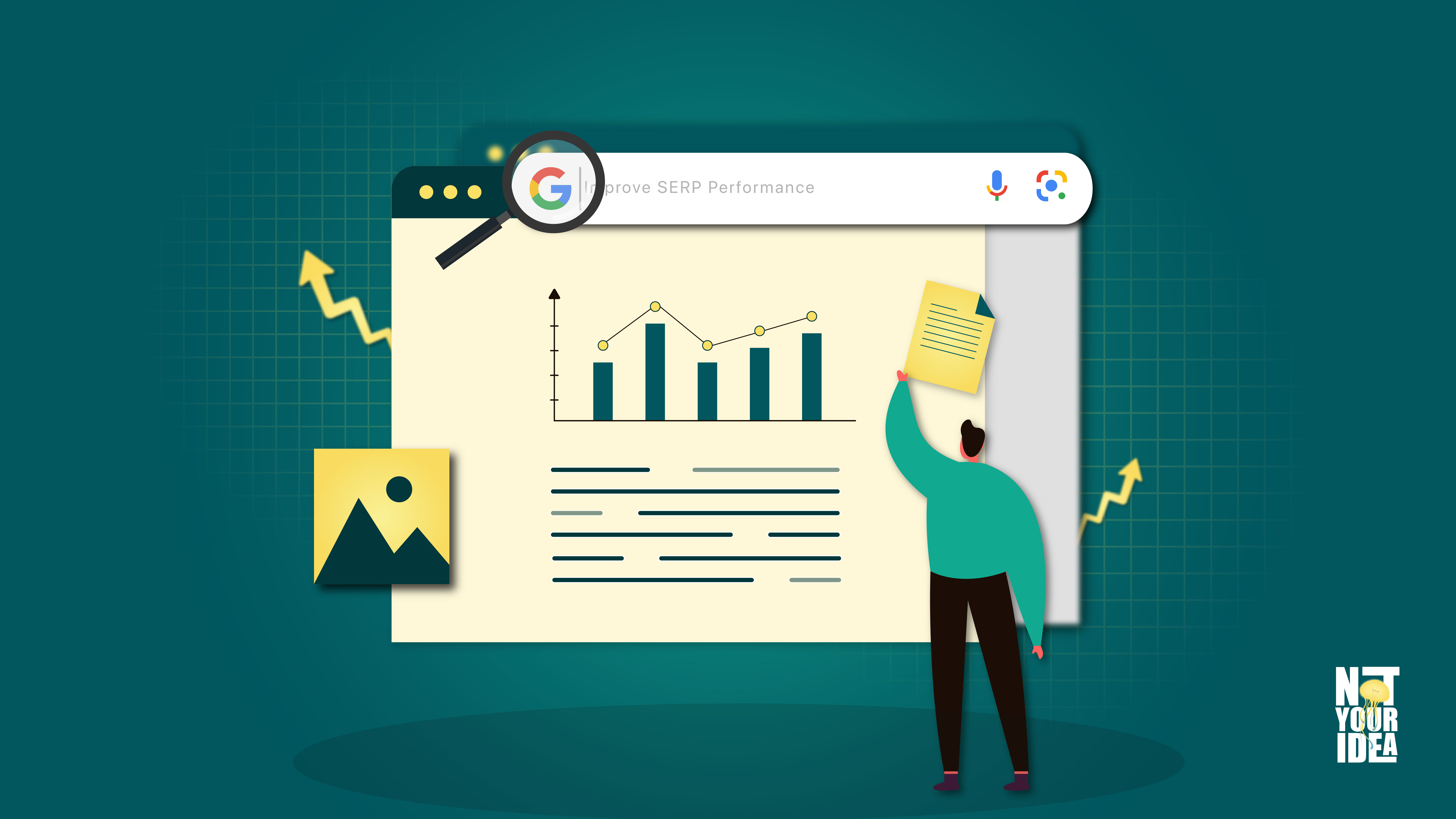The SERP is a crucial aspect of the digital landscape, and featuring prominently on it is a key goal for businesses. While Search Engine Optimization (SEO) is an important part of dominating the SERP, it’s only one part of the overall approach needed. Understanding how to improve SERP performance by optimizing for particular SERP Features is just as crucial for the success of a webpage.
Search Engine Optimization (SEO) Basics for SERP Performance
As the name implies, search engine optimization (SEO) is about improving websites and web pages to make them more accessible on search engines, ultimately boosting their visibility on search engine results pages. This is achieved through a variety of means, including both on-page SEO and different off-page strategies.
- On-Page SEO: It indicates the best practices within and on your website to make it easy to find on search engines. This includes creating detailed page metadata (data about data) for each page and elements such as photos, as well as using unique, static URLs, among other things. It also involves content strategies like creating content pillars and topic clusters.
- Off-Page SEO: It refers to strategies outside your website, as opposed to on-page SEO techniques. Typical off-page SEO tactics include activities such as establishing and exchanging links, engaging in social bookmarking, guest posting, etc.
Improve SERP Performance With SEO
Keyword Research & Optimization: Keyword research allows you to determine user intent and adjust your content accordingly. Strategic keyword placement in titles, meta descriptions, headers, and content improves your chances of ranking better.
High-Quality Content Creation: In the world of SEO, content is everything. It needs to be well-researched and informative content, addressing user queries. Engaging content satisfies user intent and increases the likelihood of attracting organic backlinks and social shares.
Technical SEO: A well-optimized website layout is the foundation of SERP success. Your website must include features like quick loading times, mobile user-friendliness, clean URLs, and descriptive alt tags for images. Technical SEO makes the website more mobile-friendly, helping it rank higher.
Building Backlinks: Backlinks, or inbound links from authoritative websites, are a vote of confidence in the credibility of your material. To acquire valuable backlinks, you must cultivate relationships within your industry. You could also create shareable content and engage in guest posting for the same.
Alongside SEO, also ensure you're keeping up with AEO and GEO efforts. This will help your site retain rankings in an age where AI is getting increasingly integrated into Search.
How to Improve SERP Performance With Serp Features
Optimizing for the Featured Snippet
This brief paragraph summary of text shows up at the top of the SERP, making it highly desired by marketers and creators alike. However, there’s no special formula that’ll guarantee showing up on the featured snippet. Google prioritizes pages that provide clear and crisp information that is relevant to the keyword. So, if you want to make it to the featured snippet, ensure your content is well-written and fulfills the purpose you intend for it.
Structuring your page and content is also critical to getting featured. In general, this is one of the best practices to follow when it comes to on-page SEO. Using question-type ‘what is’ headings, heading tags, bullet points, and tables are a few things to do.
Ranking on Google’s AI Overview
Google Search’s AI Overview section, that shows up at the top of the SERP, is similar to the Featured Snippet. The major difference is that generative AI creates a section personalized to the keyword, rather than picking up information from another page in the case of a Featured Snippet.
Again, structured and crisp content is important for AI overviews. Aside from right headings and precise phrasing, using bullet points also helps. The content should be easy for the AI to scan through and use accordingly. It should also be factually correct with information that can be reliably verified. You can establish your website’s reliability and authority with tactful and relevant interlinking. Make sure there is no outdated information on your pages. FAQs at the end of pages are also very useful to present clarity.
Visibility for ‘People Also Ask'
The People Also Ask section appears on almost every search. Adding an FAQs section at the end of your page is especially effective to show up for this snippet. Using an existing question from this section for a keyword in your FAQs helps you provide it with an exact match, increasing the chances of your site showing up in this section. Header sections in the form of questions, and long-tail keywords in headings are also beneficial, as these are more likely to be searched as queries.
Optimizing for Knowledge Panels
Knowledge Panels most often show up when you search for a specific entity like a company or individual. Ranking for this snippet is crucial for your own business to be discovered.
While a Knowledge Panel is similar to a Google Business Profile, there are some differences. A Google Business profile is more practical in nature, with buttons to visit a business website, get directions, and contact the entity. A Knowledge Panel, on the other hand, is meant to provide crucial information on a search query.
Alongside its own Knowledge Graph, Google draws upon other high-domain websites such as Wikipedia, LinkedIn, Crunchbase, etc. to populate the Knowledge Panel. Make sure you have a presence on those platforms to optimize for visibility. The About Us page on your website should be as detailed as possible, as well as the schema markup on relevant pages.
Appearing for Popular Products
This section matters if you have an e-commerce website. For your products to show up, your product catalog page must be well designed with clear images, CTA buttons, and prices. You’ll have to implement schema markup here as well.
Top Stories Visibility
Media publications generally show up for this feature, helping readers get to relevant news articles faster and be updated in real time. Of course, the content needs to be relevant to a keyword, updated, reliable, and factually correct. Featuring in this section is also subject to location, as different information is relevant to different geographies.
FAQs
What is the Difference Between SEO & SERP?
SEO stands for Search Engine Optimization, while SERP is short for Search Engine Results Page. SEO refers to the practices websites use to rank better, whereas SERP is the webscape on which they show up.
What is a SERP Rating?
The higher up a search result appears on the SERP, the more likely people are to give it a click. The top-ranked results, typically appearing towards the top of the SERP, often garner the highest click-through rate.
What is an Example of a SERP?
A Search Engine Results Page (SERP) is what you see when you type in a search query. So, when you enter a keyword search on a site like Google, what you see is the SERP – a list of results.
What Is SEO vs SEM vs SERP?
SEO deals with website content, images, and search engine algorithms. It's distinct from SEM, also known as search engine marketing, paid search, or pay per click. Both approaches aim to improve your standings on SERPs, or search engine results pages.
Why Is SERP Important For SEO?
The importance of SERPs lies in how they determine a website's position on the search results page, guided by ranking signals. When a website ranks poorly on SERPs, it leads to reduced visibility, fewer clicks, diminished traffic, and ultimately, less revenue. This is precisely why websites dedicate substantial effort to optimizing their SEO.
Which SERP Feature Has the Highest Traffic Potential?
Amongst all the SERP Features, AI overview has the highest traffic potential as it is visible at the top of the SERP and provides the content to the user.



